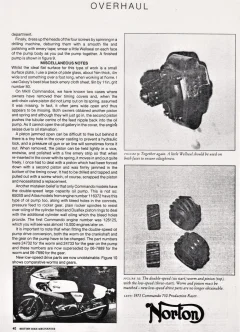- Joined
- Oct 18, 2018
- Messages
- 11
Hey,
Every time I put on six start in replace of 3 start I moved overhead rocker feed to bottom of the timing chest ala commando style, scrolled or not, I have ruined more cams by lack oil flow from head then any soft cam problems ever encountered.
Never ran down Atlas cam tho!
One trick was open oil tank on Atlas and put you finger on oil return momentarily to flush oil to head, now who showed me that trick
nortonmark
Every time I put on six start in replace of 3 start I moved overhead rocker feed to bottom of the timing chest ala commando style, scrolled or not, I have ruined more cams by lack oil flow from head then any soft cam problems ever encountered.
Never ran down Atlas cam tho!
One trick was open oil tank on Atlas and put you finger on oil return momentarily to flush oil to head, now who showed me that trick
nortonmark




